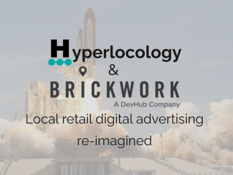Over the last 20 years, Google and Facebook have created a duopoly when it comes to digital advertising. Google and Facebook, together, claim 59% of digital ad spending as of 2019. If you factor in Amazon, the Big 3 make up 65% of the spend.
The reason why advertisers are drawn to these walled gardens is the accuracy offered. When it comes to user targeting, the pool of unique first-party and third-party data becomes the driving factor for users. Google is known to offer holistic products like AdManager to become a one-stop solution for publishers. While Google partners up with other firms, Facebook and Amazon both like to keep their walls guarded when it comes to data sharing.
There were also API problems where multi-location brands looking to leverage Facebook and Google couldn’t put the proper controls in place, execute effectively from a creative, optimization, and reporting standpoint, and maintain brand compliance at local levels. While the ease of accessing walled gardens has loosened up, this has worsened the problem for brands in terms of compliance and a lack of access to local data needed to drive meaningful local digital marketing results.
The First Wave of Multi-location Solutions Lacked Sophistication
The initial wave of multi-location marketing platforms, built in the last two decades, was designed with prevailing technology and the digital consumption habits of consumers. It was resource-intensive, manual, time-consuming, and cumbersome to set up and manage.
Brands were able to allow locations to select approved creative assets and work independently with vetted local agencies to launch local ad campaigns. These platforms were great for ensuring brand safety and providing local owners with professionally guided, manual execution across ad platforms. But, they were not cost-effective, automated, or able to be optimized for the performance necessary to drive results for all locations - based on local consumer preferences.
For example, national and regional campaigns would be executed, but delivery would be optimized toward performance. Post-campaign data was only representative of the audience where most conversions occurred. Brands would expand their strategy to all locations based on results, which was the only representative of a few locations in the biggest markets.
Results suffered and money was wasted. Some brands still operate this way.
Modern Martech
Thankfully for multi-location brands, technology has and will continue to solve the challenge of managing digital advertising for hundreds or thousands of brand locations.
Hyperlocology is a single solution to execute campaigns across all major advertising networks, with individual budgets, messages, and reporting per location.
See a full timeline of the digital media and technological evolution in our new guide and Learn to Transform Multi-location Digital Advertising from Siloed to Centralized - just click the button to open!


